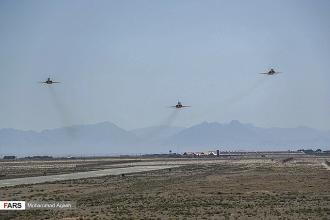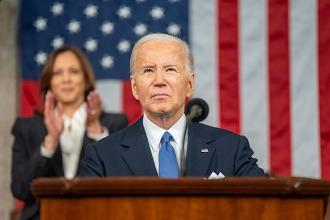Peer group pressure has gotten a bad rap. Inevitably, when we hear “peer group pressure” we picture teens and young adults being drawn into drug use, promiscuity and all manner of risky behavior; we imagine young professionals being lured into living above their means. Too often, we overlook that peer group pressure can also be a force for good and just behavior.
In parashat Behar we read that every seventh year is shemitah, and following seven cycles of shemitah is Yovel – a time when our fields are to be untended and unguarded for a full year. Yovel attests in deed to our trust and faith in the ultimate Provider, crystalizing our recognition that this world is but a corridor to the ultimate world, where labor and material possessions are replaced by the spiritual.
Indeed, on Yom Kippur of the Yovel year the, “…sound [of] the Shofar throughout the land” proclaims that all slaves go free. Ramban relates “yovel” to movement: yoviluhu raglav – his feet will take him wheresoever he desires. With the freeing of slaves – who, by definition, have no freedom of movement or control of their time – all people have the freedom to come and go as they please.
But what if I do not want to let my slaves go free? What if I do not have such a spiritual sensitivity to appreciate what is being asked to me? What if I’m a “dollars and cents” kind of guy? To set free my slaves is to threaten me with financial ruin!
We note that the Yovel shofar ceremony is identical to the shofar ceremony on Rosh Hashanah – the same shofar blasts, the same awe, the same fear and trembling. At that time, we are told, “…you shall return each man to his ancestral heritage and you shall return each man to his family.” (Vayikra 25:10)
Slave and land return to their “roots”.
In the awesomeness of the moment, the message is clear – proclaiming our freedom from sin demands our valuing and proclaiming the freedom of others. The Pnei Yehoshua explains that when the Jewish people show their concern for others by freeing their slaves it is not only the slaves who benefit, but the entire nation.
It is a glorious moment for slaves and land – but an admittedly challenging one for slave owners and landowners. The “dollar and cents” man simply doesn’t want to let his slaves go. He does not want to bear the immediate and concrete losses for some vague, future spiritual benefit.
God understands his doubts. That is why God proclaimed that the Shofar be sounded; to motivate all the people to free the slaves and release the lands. Doing so made clear that everyone was releasing their slaves and land. Not just Chaim Yankel, every Chaim Yankel. No one man would suffer more than another for releasing his slaves! As the Chinuch explains, the shofar was sounded, “…so that they will realize that this is something standard throughout the land, and that all do so.” “The Chochom teaches”, says the Chinuch, that tza’ar rabim nechama – the suffering of many is a consolation.
Everyone is doing it. Talk about peer pressure!
How could the “dollars and cents” man resist?
There is a Jewish teaching that holds that, “companionship in suffering is half of comfort.” It is a familiar teaching and, yet its sourcing is impossible to determine.
My grandfather, HaGaon Rav Bezalel Zev Shafran z’l, was a brilliant Torah master.
The great majority of his writing and teaching was concerned with the intricacies of halacha. Yet this saying, intrigued his intellect and enlivened his soul. He knew that all knowledge and wisdom emanate from Torah and yet the source of this seemingly obvious and universal sentiment proved elusive, making it ever more intriguing to him and, consequently, to me.
Like my grandfather, I wondered how the source could not be known? As a child, I confronted my rebbi. “Can you please tell me,” I asked him, “what is the source of the statement tzaras rabim chatzi nechama?” He gave my request a great deal of thought but in the end, reached the same conclusion as my grandfather. “I do not know the source, but if the suffering of the many is comforting to the individual sufferer, that’s good enough. It requires no source.”
Not only is the teaching difficult to source, but to the sensitive and thoughtful person, my grandfather noted, it could be alarming. He wondered, “if a devastating plague ravages the entire world, if others suffer as I do, does that make me any better off?” Did anyone contemplate such thoughts during this past Covid year?
Prescient! Yet, my grandfather’s concern seemed not to be widely shared. Even now, colleagues are dismissive of the quote.
“It’s not that others suffer, it’s that they share the burden. Lonely suffering is a heavier psychological burden.” Or, “…part of the overwhelming aspect of suffering is that it isolates a person and generally creates a feeling of loneliness. When a person suffers with others who fully understand his plight, that element of loneliness becomes greatly diminished and serves as a source of comfort.”
In these observations, there is the underlying thought that we somehow share distress because “everyone” feels, errs, acts, the same way. However, that reasoning is also fundamental to what allows the saying to be dismissed as cynical!
My grandfather would not have devoted his prodigious intellect [Yalkut HaChanochi 31] to a mere “folk saying” let alone something trivial or cynical. I knew there had to be more….
Our texts speak to how angst and worry affect us. In Mishlei (12:25) the wisest of all men said, “Worry in the heart of man makes him stoop before others.” (as in Yoma 78a). Rashi explains that his worry, “…makes him bow before others, perhaps they will give him advice.” Arukh explains, “So that they pray for mercy on his behalf.”
My grandfather explains that Arukh’s explanation gets to the heart of the issue and provides guidance in understanding the saying, The Sages, in Shabbat (67a) state that, “one must announce his torments publicly, so the public will pray for mercy on his behalf.”
Aha! “For if many share the distress of the individual and feel his pain, they certainly pray for him and pray for mercy on his behalf. God forbid they should fail to do so!” Certainly, in the case of a Torah scholar they must beseech on his behalf (as in Berakhot 12a). Prayer is more potent than good deeds (ibid. 32). This prayer will be credited to him as “half of comfort,” as the Sages teach, “Prayer accomplished half” (Vayikra Rabbah 1:5; Rashi on Ekev 9:10).
There is an allusion to this saying in Midrash Rabbah (Devarim 2:14): “What is the meaning of ‘when you (“you”, singular) are in distress’? R. Yohanan said in the name of R. Akiva: The distress of the individual is distress. If it is not individual, it is not distress.”
Distress is singular. As soon as it is shared, it ceases to be distress. In fact, it may very well be that there is a fundamental singularity to distress which demands that we find connection for relief!
My son, Natan, observes, “It’s the manifestation of lo tov heyot Adam levado – It is not good for man to be alone.” God never intended for man to be alone. “People are social animals. It’s good for them to be together. Never is it more important to be together but when there is pain, distress.”
The Talmud (Berachos 32) teaches that prayer is more potent than good deeds. Why? Prayer bridges the isolation of the individual.
Jewish law does not want one who is suffering to be cut off from the community. That is surely the reason why certain prayers demand a community, a minyan. Certainly, that is true of the Kaddish. Without such a law, someone who loses a loved one might withdraw into his or her deep grief and distress. Jewish law compels mourners to join a community three times a day to recite this prayer.
The knowledge that we do not suffer alone is a consolation – not “half a consolation”. That we are not alone, not in creation and not in our community, is fundamental to our consolation. My grandfather, I believe, would add that this nechama is completed “in halves”. That is, half is accomplished with prayer and the other half, the fullness of our consolation, in the recognition that, “we are all in this together.”
What is a community if not a peer group? And that pressure we feel? That is the embrace of those around us, urging us toward wholeness and goodness.
















